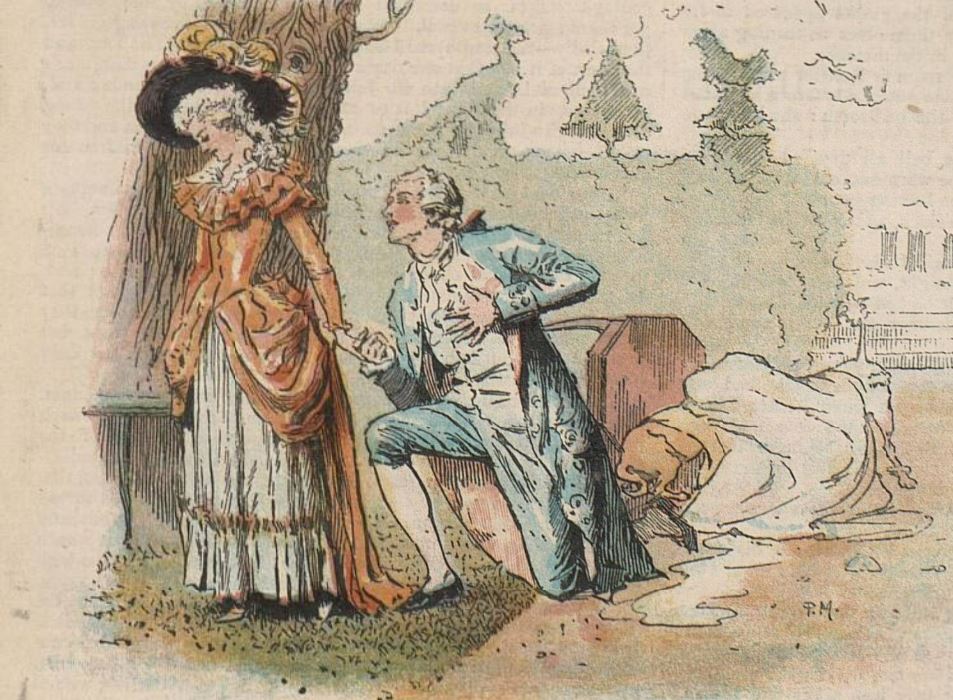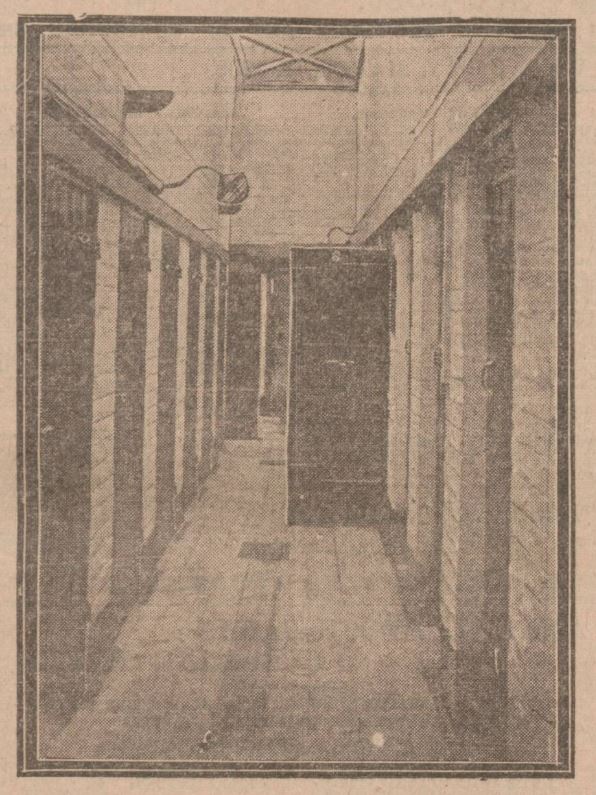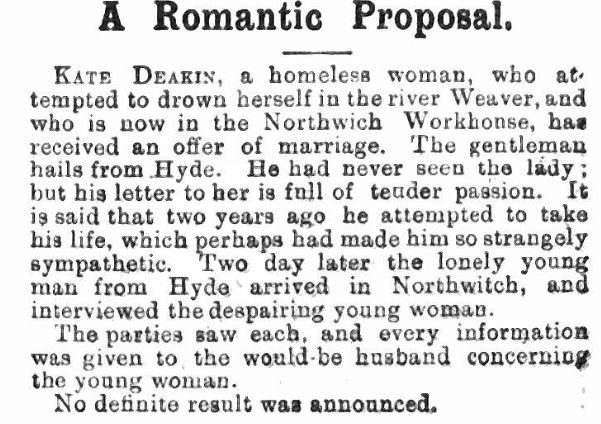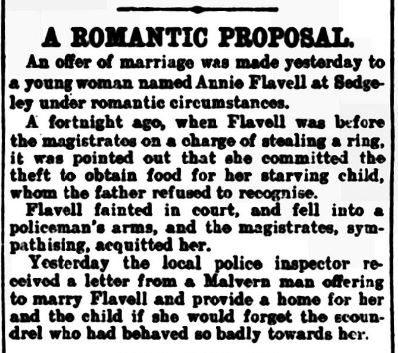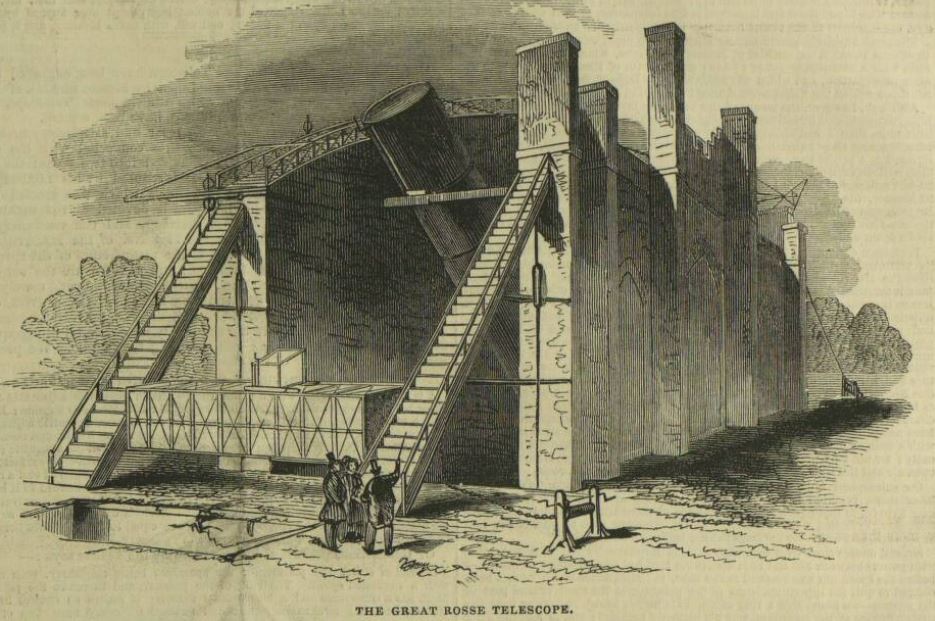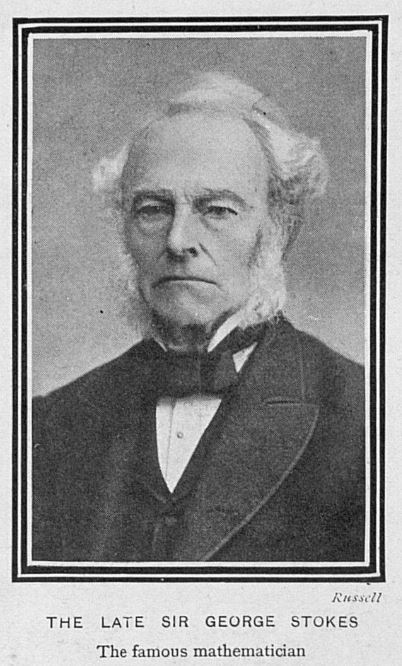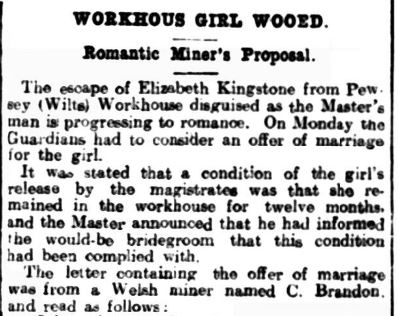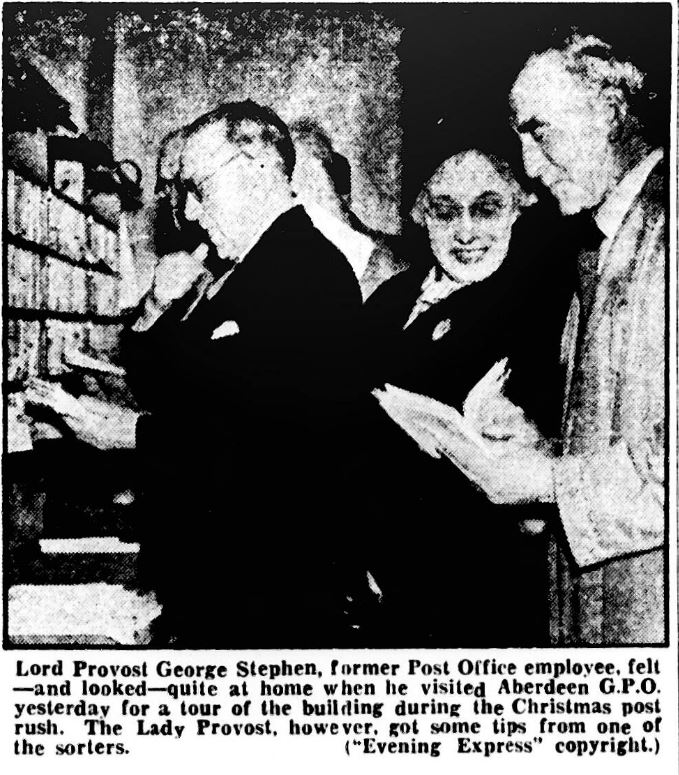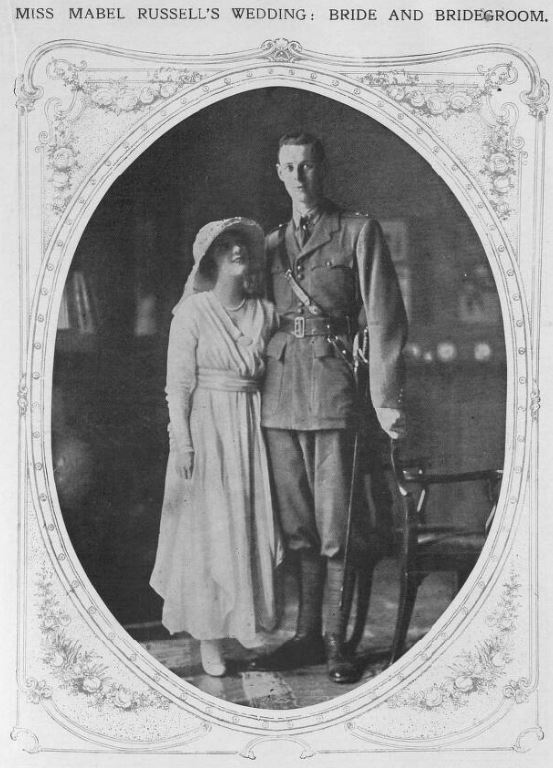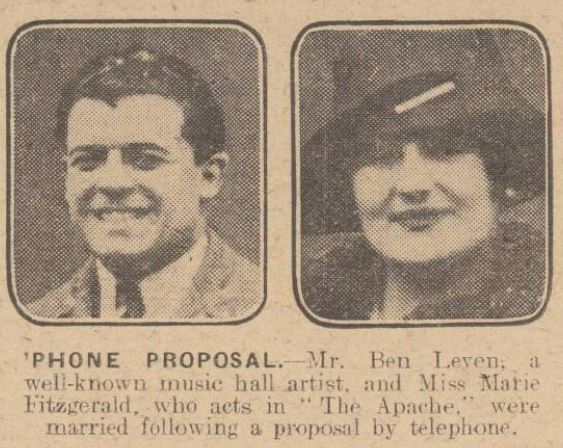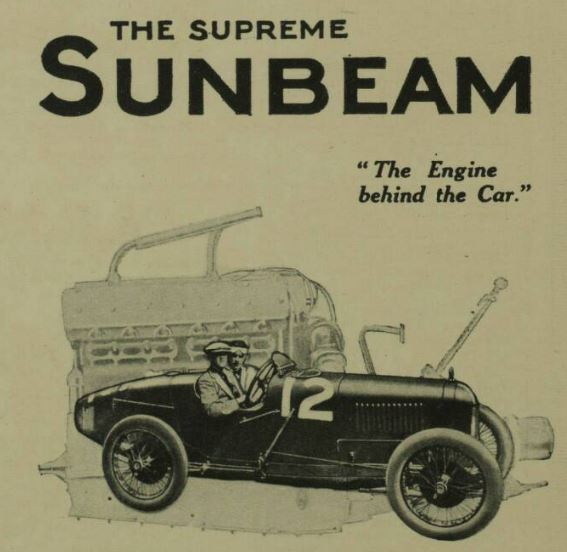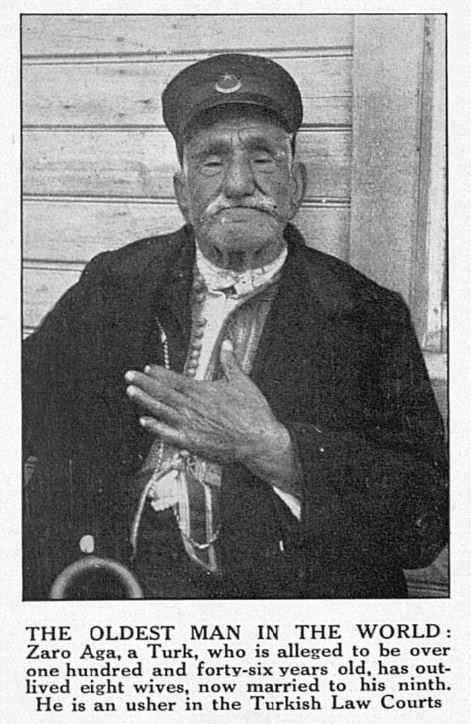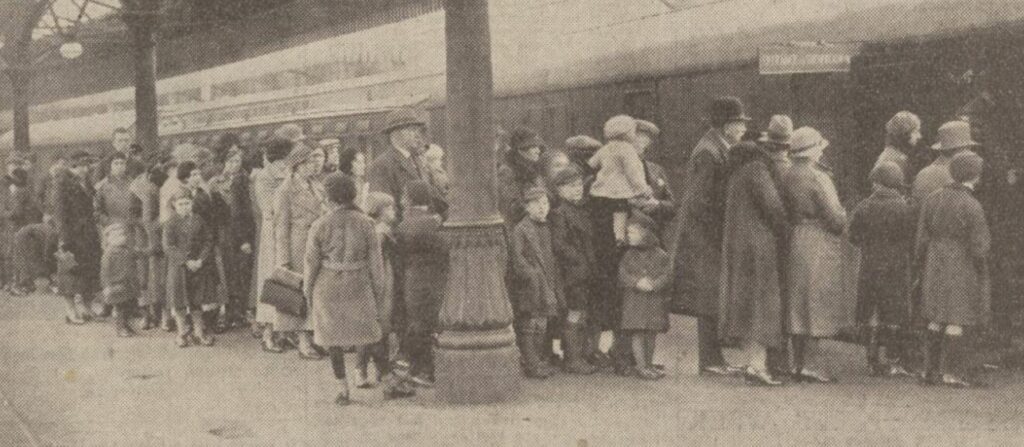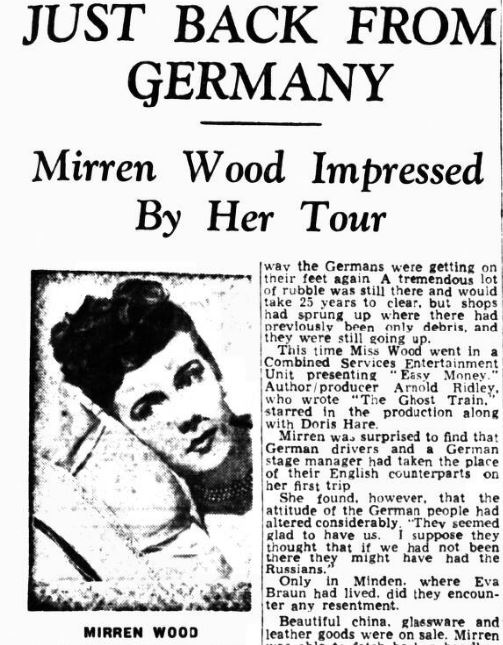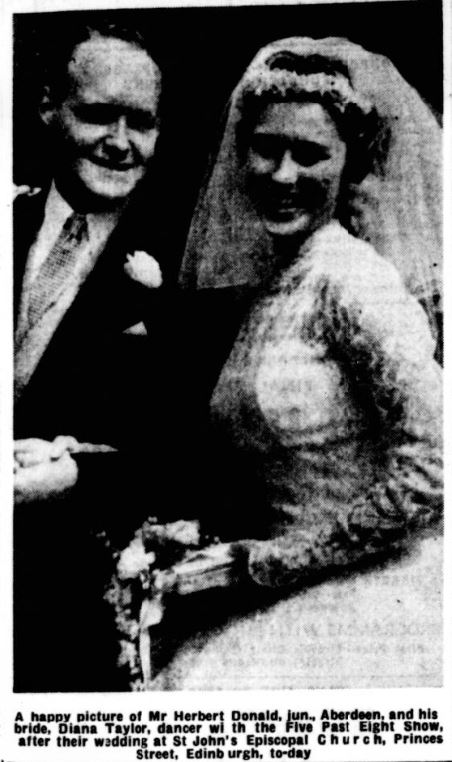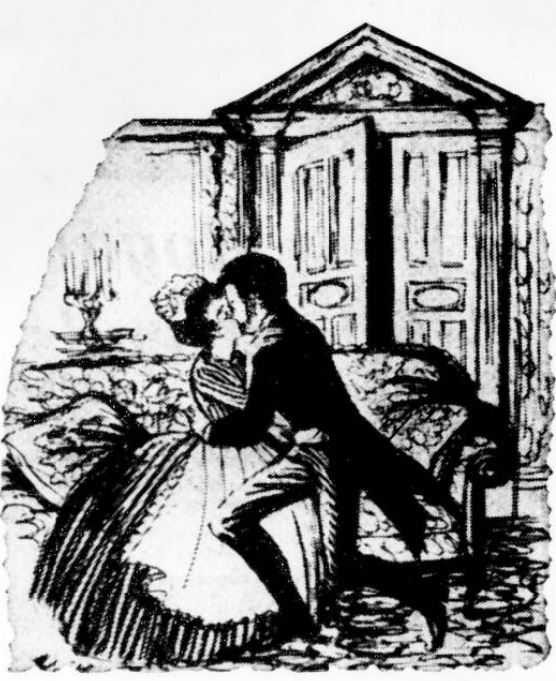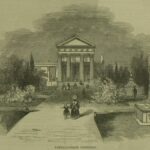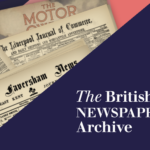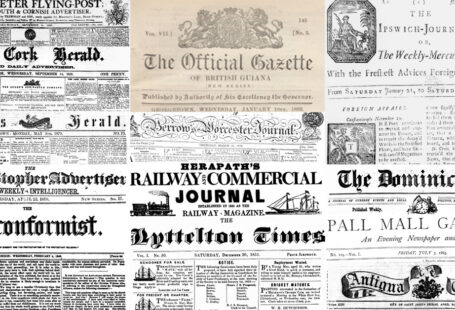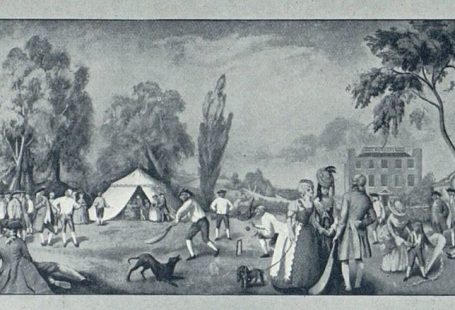It’s the most romantic time of the year, and to celebrate Valentine’s Day, we’ve selected twelve of the most romantic marriage proposals from our Archive. From wartime proposals, to engagements formed at the opera, our newspapers showcase romance from across the ages.
So without any further ado, let’s launch into our list of the twelve most romantic marriage proposals from our newspapers, beginning in 1898 and going all the way up to the 1960s.
Register now and explore the Archive
1. A Proposal At The Opera – November 1898
In November 1898 the Derry Journal detailed some ‘strange proposals of marriage,’ highlighting one in particular that was made at the opera. The newspaper tells of how:
Some time ago, at an opera, a gentleman fell suddenly in love with a young lady, who sat with her mother and sister a few seats away from his. Tearing a leaf from his pocket-book, he wrote upon it, ‘May I inquire if your affections are engaged?’
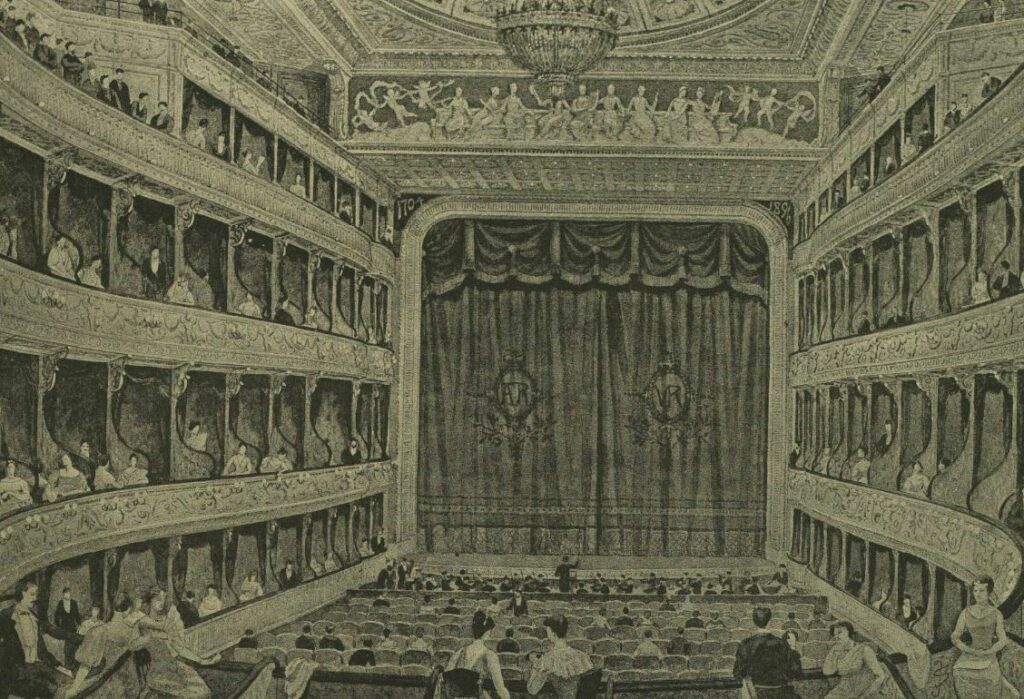
Upon consultation with her mother, the young woman wrote back that her affections were not engaged, but asked the young man why he had asked. He responded:
‘I love you dearly. I am single. I have £1,000 a year. I am not in debt. I have a good house, and I only want a good wife to make me completely happy – will you be mine? If you will, I promise (and with every intention of keeping my word) to be an affectionate, indulgent, and faithful husband to you, and what more can I say?’
That was persuasion enough; she accepted the proposal, and after four months the pair ‘entered upon what has proved a very happy married life.’
2. A ‘Tender Passion’ – May 1899
The next year, in 1899, the Illustrated Police Budget reported on a ‘romantic proposal‘ to a ‘homeless woman’ named Kate Deakin. Kate had ‘attempted to drown herself in the river Weaver,’ and was living at the Northwich Workhouse, when she received an offer of marriage from a gentleman from Hyde.
This man had never met Kate, but he too had once ‘attempted to take his life’ two years before. His proposal was ‘full of tender passion,’ and he arrived at the Northwich Workhouse some two days after he sent the initial letter.
The Illustrated Police Budget reported that the pair had met, but ‘no definite result was announced.’
3. ‘Romantic Circumstances’ – August 1903
On 4 August 1903 the Northern Daily Telegraph reported on another ‘romantic proposal,’ this time to ‘a young woman named Annie Flavell.’ Annie had been brought before the magistrates at Sedgley, which historically was part of Staffordshire, ‘on a charge of stealing a ring.’
The newspaper details how ‘it was pointed out that she committed the theft to obtain food for her starving child, whom the father refused to recognise.’ During the hearing, Annie fainted, falling ‘into a policeman’s arms,’ and the magistrates then acquitted her.
It was revealed the next day that a police inspector had received a letter from a man in Malvern. He offered to marry Annie, and ‘to provide a home for her and the child if she would forget the scoundrel who had behaved so badly toward her.’ The report does not tell us whether Annie accepted the proposal or not.
4. A Telescopic Proposal – April 1904
So far, the ‘romantic proposals’ featured by the press have been markedly one sided: men proposing to women without ever having met them. By our standards today, these proposals are more uncomfortable than romantic, but our next ‘romantic proposal’ can be considered more genuinely romantic, if not a little unusual.
In April 1904 the Dublin Daily Express reported on a ‘Romantic Proposal‘ that had taken place in ‘the tube of the famous Rosse telescope.’ Built in 1845, the Rosse telescope was the largest telescope in the world until the construction of the Hooker Telescope in California in 1917.
It was in the tube of the telescope that ‘the late Sir George Stokes, Bart., who was Lucasian Professor of Mathematics at Cambridge, President of the Royal Society, and member for Cambridge University, proposed to his wife, who was a daughter of the Rev. Romney Robinson, the Astronomer-Royal of Ireland.’ A fittingly romantic backdrop for the astronomy-minded couple!
5. ‘Workhouse Girl Wooed’ – October 1913
In a similar vein to the stories of Annie Flavell and Kate Deakin, in October 1913 ‘workhouse girl’ Elizabeth Kingstone received an offer of marriage from an unknown admirer.
Elizabeth had hit the headlines when she had escaped from the workhouse at Pewsey, Wiltshire, ‘disguised as the Master’s man.’ The Bradford Weekly Telegraph on 24 October 1913 reported how a letter was sent to the Pewsey Guardians from a Welsh miner named C. Brandon, which contained the following offer of marriage:
I have been reading the case of Miss Kingstone, and I am very sorry for her. I am writing to ask her whether she will accept an offer of marriage. I will take care of her and be a good husband to her. I am in good work and earning good wages in a coal mine. I do not drink or smoke. I am twenty-three years of age, so that if she accepts my offer we can get married at Christmas.
Brandon went on to express how ‘he had had enough of lodgings and would like a home of his own,’ and that he thought Elizabeth would ‘turn out a better girl after marriage.’ He offered to pay her fare to Wales, and he would put her up with his landlady until the day of their wedding, which he had chosen as Christmas Day.
The Guardians were nonplussed by Brandon’s offer; they suggested that Brandon ‘should do his own courting and not expect the Guardians to do it for him,’ although they promised to let Elizabeth know of the proposal.
6. Proposal By Letter – 1917
In 1961 journalist Pearl Murray authored a piece on modern proposals for the Aberdeen Evening Express, which examined the ‘common conception of the classic proposal,’ namely ‘the young man setting the scene for the all-important question on his knees in a moonlit garden.’ She wrote how such a notion was ‘old-fashioned,’ dubbing it at least ‘a century out-of-date.’
To prove her point, Murray interviewed women from across Aberdeen, dismantling any ideas that ‘romantic proposals’ existed within the confines of the twentieth century. However, in doing so, Murray inadvertently reveals some actually very romantic proposals, that may not have been framed in moonlit gardens, but are filled with romantic intent all the same.
One such proposal was received by Aberdeen’s lady provost during the First World War. She had been writing to her would-be fiancé ‘all the time,’ whilst he was stationed in France with the army. And it was by letter that he would propose, and ‘all arrangements’ for the wedding were also made by letter.
She described how:
‘It was an austere, war-time, wedding in 1917. No long white dress, just a suit. And I don’t think there was icing on the cake!’
In spite of the conflict, love was the order of the day!
7. ‘High Speed Romance’ – March 1927
As the 1920s roared along, so did romance, and ‘romance of the highest order surrounded a theatrical wedding’ in Liverpool in the March of 1927, as reported the Larne Times. The happy couple were dancer Marie Fitzgerald, and music hall performer Ben Leven, one of the ‘Three Rascals.’
The Larne Times dubbed Leven’s proposal as ‘one of the biggest wedding hustles on record.’ It came about after Leven had attended a wedding of a friend, and soon he became intent on proposing to his girlfriend Marie Fitzgerald.
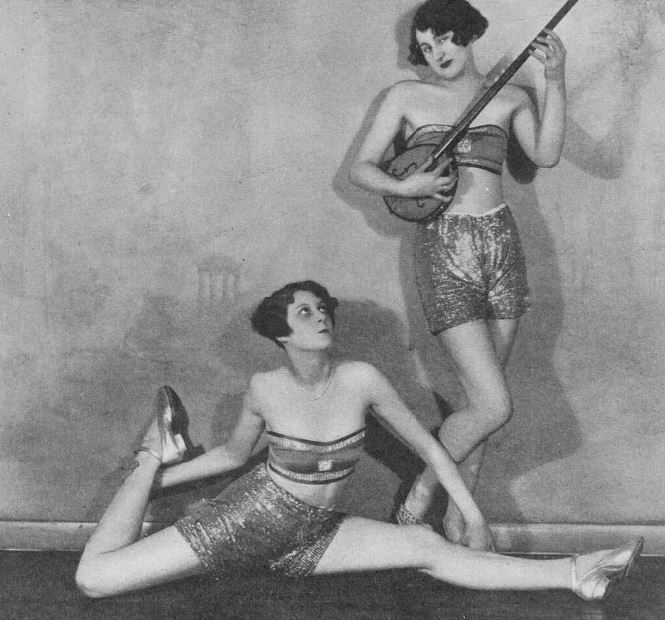
The newspaper tells of how:
The following night he was sitting in his dressing-room at the Trocadero playing romantically on his ukulele when Mr. Peel Smith, the manager, entered and said jocularly, ‘If you feel as bad as that why don’t you marry the girl.’ ‘Right,’ said Mr. Leven, ‘I will.’
Taking firm hold of the telephone he called the London Palladium and asked to put be through to Miss Marie Fitzgerald the dancer. ‘Will you marry me,’ he asked. ‘Marry you, when?’ ‘Why now, of course,’ replied the voice of her lover.
Marie then asked her mother for her blessing, and travelled up to Liverpool the next day. ‘Within 24 hours the wedding took place,’ as by ‘Friday noon the nuptial knot was…tied.’
8. ‘Cupid Takes The Wheel’ – June 1928
Another high-speed ‘romantic marriage proposal‘ was reported on by the Londonderry Sentinel a year later, in June 1928, this time between motor-racing couple Mr. R.H. Millington, from Manchester, and Mary Cunliffe, from Melton, Derbyshire.
With the marvellous headline of ‘Cupid Takes The Wheel,’ the newspaper reported on the announcement of the engagement between the happy couple. It details how Millington had been ‘doing 100 miles an hour on Brekdale Sands, Southport, when ‘cupid took the wheel’ and he proposed to Mary.
Mary too was an accomplished racing driver; the Londonderry Sentinel notes how she raced ‘a Sunbeam car previously used by Major Segrave, and is well known in Shelly Wash events.’
9. A ‘Love Letter’ to the ‘World’s Oldest Man’ – May 1934
In May 1934 the Belfast Telegraph reported on a marriage proposal received by Zaro Aga, who was ‘reputed to be the world’s oldest man.’ He was allegedly 170 years old, and was at the time ‘seriously ill’ in an Istanbul hospital, although doctors had said ‘there is no organic disease and that he may still live for many years.’
The proposal of marriage had come from thousands of miles away, from a ‘young Milwaukee girl, who inquired whether Zaro Aga would be prepared to marry her.’ The pair had met when Zaro Aga had toured the United States, and she had then ‘expressed a desire to marry him.’ However, she was not ‘then of age,’ and her parents had requested that she wait until she was 21 and to reconsider her wishes then.
She had reconsidered, and ‘renewed the romantic proposal’ to the elderly man, who was said to be ‘greatly excited at the prospect of having a fourteenth wife,’ having outlived thirteen wives.
Zaro Aga, however, sadly passed away the following month.
10. Proposal on a ‘War-Time Platform’ – December 1940
Another one of the examples given by Pearl Murray for a non-romantic proposal was that of the engagement of Councillor Mrs Mary Loggie, however, we think that this proposal is incredibly romantic, with flashes of Brief Encounter.
Mary Loggie had met her husband, a ‘young Merchant Navyman,’ at a dinner on Christmas night. After that, the Pearl Murray for the Aberdeen Evening Express relates how he had ‘spent most of his leave with her.’
The couple then found themselves at Aberdeen Joint Station ‘on Hogmanay night, 1940.’ With the Second World War raging, he popped the question, leaving it to the ‘very last minute just before he got on the train.’
Despite only having known each other for the best part of a week, Mary was not surprised, stating that she had been ‘expecting it.’ In the spring, he came back on leave with a ring for her, and the couple were married in the autumn.
11. Proposal Via Telephone Call – May 1949
Another military-themed romantic marriage proposal was reported on by the Aberdeen Press and Journal in May 1949. This time the happy couple were Major A.N. Campbell-Baldwin of the Argyll and Sutherland Highlanders, and actress Mirren Wood.
The newspaper tells us how Campbell-Baldwin (31) had watched a performance of Easy Money given by the Combined Services Entertainment Unit near his army quarters in Hanover, in which Mirren Wood (22) had performed. The pair were introduced at a party following the performance, and three weeks later, after Mirren had returned to her home in Croydon, she received a phone call from Hanover.
Campbell-Baldwin, a veteran of the Second World War, who had served in the Far East, proposed to Mirren, an actress who had appeared in ‘over one hundred broadcasts’ and on the West End, and was accepted. The wedding was due to take place in London shortly.
12. ‘The Romance of the Yellow Cars’ – 1950s
Another of Pearl Murray’s less romantic example of a proposal was that of Diana and Herbert Donald. However, we think that there is enough romance here to justify its inclusion in our list.
Diana was a dancer who was appearing in the Five Past Eight revue at the Alhambra Theatre in Glasgow, as the Aberdeen Evening Express details. Herbert was then the theatre’s stage manager, and the pair had only known each other for three weeks.
The proposal itself was fairly rushed, Diana relating how ‘it all happened so quickly, I can’t remember what he said.’ Donald had proposed in the car ‘one night after the show,’ Diana dubbing the proposal ‘an awful shock.’ But the romance of this proposal stems from the fact that the couple coincidentally had the same car, identical ‘yellow sports models:’
‘He lived round the corner from me. And when we got to know each other the cars used to be parked together, side by side. Folk called ours the romance of the yellow cars.’
That’s it from our list of twelve of the most romantic marriage proposals from our Archive. Which one do you think is the most romantic? Can you find any more examples of romantic marriage proposals in our newspapers?


